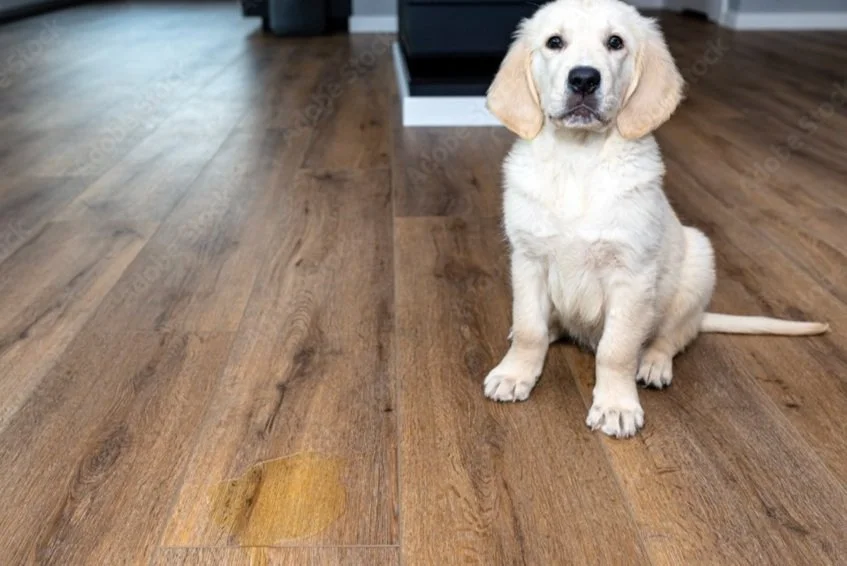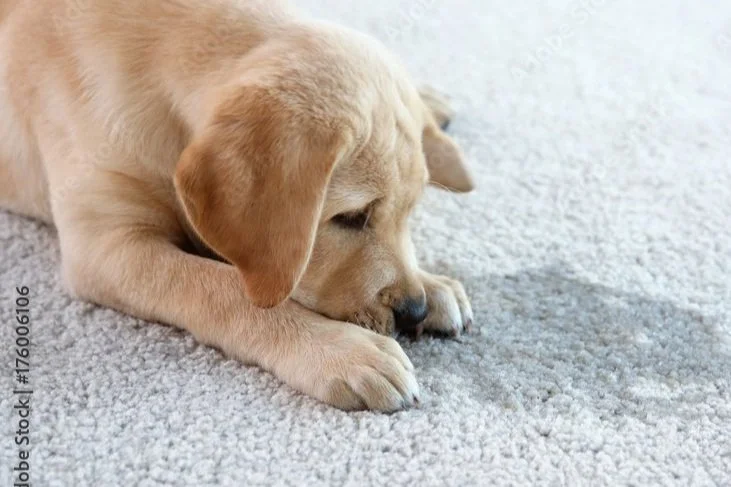Potty Training Your Puppy
You’ve brought home your beautiful new puppy. You’ve set up the crate as a cosy den, you’ve bought all the accoutrements that a lovely puppy needs, you’ve investigated what type of food is best for them and how much they could/should eat. The kids are enamoured of the new arrival and you’ve taken multiple photos for your various social media platforms. Pup is exploring her new environment. What’s next?
Whoops! Suddenly there’s a little puddle on the floor (or the carpet, or the mat). Hmm! It’s been so long since your last pup that you’ve forgotten the trials of toilet training!
Why does this happen?
Remember, your pup is the equivalent of a human baby. However, unlike the human baby who can sometimes take years to fully develop control of their bladder and bowel, pups can be fully house trained in a matter of months. However, when your pup first comes home , remember:
Developing full bladder control can take up to 20 weeks.
When they first come into your home they haven’t yet learnt the best places to pee and poop.
Because your beautiful lounge room carpet is soft and absorbent, they generally will prefer to do their business there rather than on your easy to clean laundry tiles.
They don’t know how to tell you that they need to go.
They’re really not trying to make your life harder. It’s up to you to put in place some important steps to help your puppy on the house-training journey.
There are 4 major things to think about that can support your pup as she learns about potty training. Think of them as the 4 ps (not the liquid ones that come from your baby dog, but the things that will help her develop control).
Planning
Before you bring your new puppy home, prepare a safe ‘den’ space such as a crate or a puppy pen where they can quickly settle and have a place to themselves when they need a bit of ‘me’ time. Dogs are less likely to toilet in their sleeping place, so this is the first major preparation for the new pup.
Plan your feeding times so they don’t create night toileting issues. They can’t cope with one big meal a day, so break their food into two or three smaller portions. Also, make sure they’re not fed or given access to drinking water within a couple of hours of bedtime.
Proximity
Keep your pup in close proximity to you (or other family members) for the first few weeks. Don’t allow them to wander around the house unsupervised. By keeping your pup close and learning its body language, you will soon pick up on toileting signals:
sniffing and circling
whining
pacing
squatting
Keep a poo and pee diary to record times when your puppy goes, and use it to identify patterns that you can follow up on.
Patterning
When your puppy first arrives, take him outside to the garden and show him some good spots to toilet. Then pick your pup up and take it outside to that spot regularly - remember, the times a puppy is most likely to go to the toilet include:
first thing in the morning
after eating or drinking,
after playing, or excitement such as the arrival of a visitor, kids coming home from school, you arriving back from work
Last thing at night - and through the night every time you wake up
Positive reinforcement (or party time)
When your pup has done the appropriate business, then party! Bring out the treats they love most, and don’t stint on lots of good dogs, pats and cuddles. Play with their favourite toy and generally make a great fuss about their work.
Whoopsy!
Despite your best work and the puppy’s best intentions, accidents will happen. Forget what you’ve heard about rubbing noses in excrement or banishing them from the house. Bring out the paper towels and the enzyme carpet cleaner:
Remove as much or the solid or liquid that you can with paper towels
Clean the area thoroughly with an enzymatic cleaner to stop the smell of urine or faeces attracting your dog to go there again.
If you’re unable to be home with your pup during work hours, you may need to set up a day pen similar to the inside ‘den’. Make it big enough that you can provide a toileting area away from the sleeping space and use either toileting pads or lots of newspaper - not a great option, but needs must!
Lots to think about, but all the time remember - it takes less time to toilet train a dog than it does to do the same with a child. Good luck and hopefully your pup will be one of the easy ones to train.



